Creative Leadership and what it could mean to your organization.
November 25, 2019
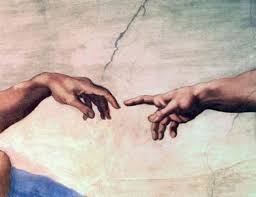
Over the years, creative leadership has meant different things to different people in different kinds of agencies. The following is meant to clarify what it could (and probably should) mean to an agency right now and moving forward…
The primary purpose of creative leadership is to enhance the creative reputation of the agency, to be a creative advocate for the agency (and its clients), and to help the agency win new business and to grow organically. Wherever the CD might assist in accomplishing these things, he/she should be enlisted. Any challenge threatening the above, he/she should be enlisted. No less important, the creative lead assists in the development of strategy (conceptual and tactical) and welcomes the collaboration.
Here’s what I do and what I feel is expected of me:
Organizing Principle. I am interested in creative business ideas that drive our client’s business; what I call an organizing principle: a melding of strategy and hyperbole that puts a stake in the ground, demonstrating the power and potential of our client’s offering. An OP usually includes a manifesto that brings it to life, a poetic and powerful story that sets up the problem and delivers the solution. For every OP I expect proof of concept in formats relevant to the engagement, i.e. home page, product and solutions, advertising, templates, trade show booth, etc…
The Three C’s: Creation. Curating. Choreography.
- Creation: As a player-coach, rely on me for high-level concept development and first order copywriting.
- Curation: Finding the best work and making it better, combining and marrying assets to tell the best story.
- Choreography: Putting work together so it flows with the rest of our content and delivers maximum impact.
Pitching. As a creative face for the agency, I should play a significant role in pitches – not just creating the work in the room but also delivering it effectively.
Strategy. I can contribute on strategy (conceptual, digital, tactical, media) and look forward to helping pre-strategy and in the development of creative briefs.
Integration, Alignment & Resources. Helping to determine best fit for creative resources from the available talent pool.
I am available for contract, freelance or full time engagement. All inquiries: Steffan1@rcn.com

Left side of my reef, featuring the big Sailfin tang I call “Moose”
I maintain a 180-gallon reef aquarium in my home. Try to anyway. The coral reef is the most complex, delicate and beautiful ecosystem in the world. Lighting. Filtration. Water parameters. Flow. Everything has to be calibrated and monitored in order to even passably mimic a real coral reef. One or two miscalculations and your reef crashes. Suffice it to say, this is not your father’s guppy tank.
Still, or maybe because of the challenges, I am an addicted reefer. I can easily spend two hours in twenty-four with my hands in the tank and even more online doing research. Nothing tweaks my nerd DNA more than scouring websites, gaping at corals, bidding on equipment, or contributing to a forum. Reef porn is real.
An ad agency has a lot in common with my reef. Though it can be more polluted (joke), the hallways and cubes of an agency ecosystem are populated by equally diverse and complicated organisms. Some species, like the showy creative, can in fact be very sensitive. While others, the account director for example, can be very aggressive. Given the two must live together the experience can be challenging. Certain aggressive species torment smaller creatures, nipping at their work, crushing them. Biting criticism takes its toll. The wounded creative hides in his cave, camouflaged by earphones, avoiding the persistent predator. If the biggest fish in the tank is a bully, everyone suffers. When the tank becomes mired in territorial disputes, the whole thing crashes. Sound familiar?
It doesn’t have to.
Last night I observed my cleaner shrimp nibbling parasites off a troubled yellow tang and I realized that there is wonder here. When all these myriad creatures work together, giving and taking in harmony, the results are truly breathtaking. The solitary superstar flashes brilliance. A school of darting Anthias shows the awesome power of collaboration. If the tank masters accept the occasional skirmish, providing nourishment to all, then the ecosystem will flourish.
I am now available for writing projects and/or a creative leadership role. Please contact me directly @ Steffan1@rcn.com or via Linkedin. I look forward to engaging with your ecosystem!

My last post was about “responsible passion” as creative philosophy. I wrote that whatever the philosophy a creative professional has, it must strike a balance between passion and responsibility. We are craftsmen as well as salesmen. To do the job right, “you’ve got to do both.”
Now I’m going to talk about staying creatively fit and remaining relevant, which is a critical part of any creative philosophy.
I believe in what I like to call the “creative athlete.” He or she is creatively fit, physically and mentally. He relentlessly works at his craft. She takes classes and workshops. They are students of the game.

They are also switch hitters, in that he or she thinks about their agency from every skill position and can play there if necessary. A good copywriter is a planner. A good art director knows how to interface with clients. All are good salesman, when called upon.
The creative professional may prefer working alone or with a partner, but he or she is also a competent and enthusiastic team player.
When I was coming up at Leo Burnett, I totally related to the founder’s screed regarding the “lonely man” — a romantic figure who wrote into the wee hours. As I grew older, I had to adapt my game to accommodate the many others who ultimately affect a project.
When creative athletes become creative directors, they remain active in their core skill. They get better at the other ones. They remain teachable and open-minded.
I firmly believe in the player-coach. If I were to stop writing I would lose the ability to judge writing. I would also begin the not-very-slow fade into irrelevance.
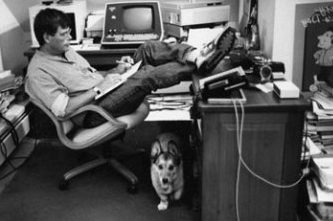
Remaining relevant is, in itself, a creative philosophy.
Honestly, I don’t know how a creative director can do the job well if he or she isn’t banging away on every other brief at the agency. I suppose some do but that’s not how I roll.
A writer writes. Right?
Being fit creatively is both mental and physical. I think a good salesperson looks good doing it. They are pumped to be working one of the coolest jobs in the world. I’m not talking about jackets and skirts. Lord knows I don’t adhere to any dress code. Just don’t skulk.
Finally, I believe in the basic tenants of a liberal arts education; in that a good creative professional is knowledgeable about our culture in all its forms. He or she is a consumer of it as well as a creator.
That means we must have a working knowledge of TV shows we don’t like and music we don’t listen to. For example, I loathe The Bachelor, but I’ve seen it. I cannot stand gossip magazines, but I read my wife’s copies. And so on.
We go to movies. We make videos. We Tweet. We read.
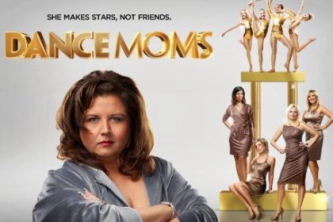
The creative professional who hates pop culture and avoids much of it cannot possibly serve our craft. Losing interest is tantamount to giving up and, as with any good athlete, giving up is unacceptable.
Know your crap.
I hope these last two posts have been helpful. While I am hardly the consummate teacher I have done this job for over 20 years. I know a thing or ten; many of them learned the hard way.
Whether or not one agrees with me on all matters isn’t critical. Your creative philosophy can and should vary. Just as long as you have one and that you are open to changing it.
Author’s Note: A version of this story was published last week on Reel Chicago
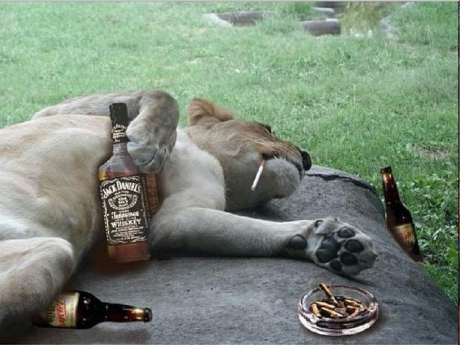
A story of Lions and Excess…
The Cannes International Festival of Advertising is finis. All over Adland people are back at their shops tweaking layouts, creating and debating Power Points and churning out banners. The business of marketing continues. Yet the hangover persists. Not from the overpriced rose’ in Cannes but from its overwrought festival. In the wake of Publicis’ controversial decree to forgo one year of entering work into Cannes or any other awards show, a hazy doubt remains, wafting in it lingering questions about the role of award shows, the cost to participate, and the value they provide.
No doubt award shows had their place, back when work was difficult to share and people harder to connect. But in the age of social media, nothing could be farther from the truth. Everyone sees everything. Shit is condemned. Cream rises to the top. By the time an ad wins an award it has been praised or vilified ad nauseam. Awards have become anti-climactic. Gilding the Lily if you will. Of course recognition is critical for agencies and their people. But claiming prizes well after the fact is antiquated.
But there’s another mitigating fact. Award shows cost a ton of time and money for agencies to participate. I think more than an App named Marcel, this is the real reason Publicis CEO, Arthur Sadoun pulled the plug. In these increasingly difficult times, he saw millions of dollars in savings. The bottom line is the bottom line.
And for this, we cannot blame him. I believe it costs around a thousand dollars to enter a piece of work at Cannes into a sole category. And there are thousands of categories with more every year. Nearly 1,500 Lions were given out this year. Out of God knows how many entries. You do the math. Agencies desperation to win coupled with outright greed by award show executives created a perfect storm. One must pay to play. The gross is gross.
I don’t think award shows should go away –necessarily- but clearly they need to be brought down to earth. There are too many shows with too many categories. Period.
Forget the many losers at Cannes. Let’s look at two of the biggest winners.
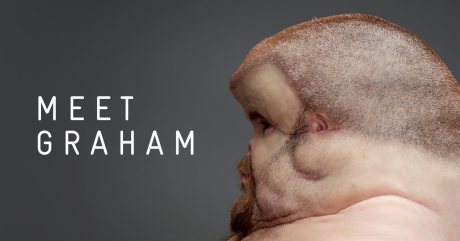
“Meet Graham”

“Fearless Girl”
Clemenger BBDO Melbourne was awarded 29 Lions & 2 Grand Prix for their “Meet Graham” campaign. McCaan New York received 18 Lions and 4 Grand Prix for their “Fearless Girl” statue on Wall Street. No question these are wonderful and deserving ideas. But 18 and 29 Lions? That’s icing on the icing on the icing. We may crave the sugar but it’s not good for anyone. Except, of course, the executives at Cannes. They’ll gladly exchange statues for cash.
If only a handful of Lions were given out they would mean so much more. But the current system demand quantity. The solution: Make the show a salon for great work and only give the most brilliant a prize. More like the film festival, which takes place a month before. Hell, if they can do it so can we. I know it’s a tough pill for the many profiteers to swallow. But it’s the right thing to do.
For copy, content and creative direction: https://steffanwork.wordpress.com/




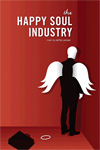 The Happy Soul Industry
The Happy Soul Industry The Last Generation
The Last Generation